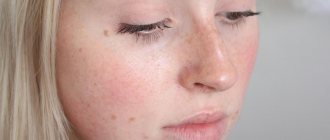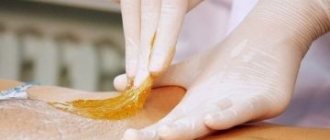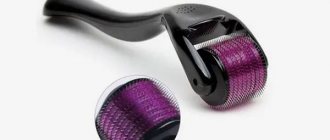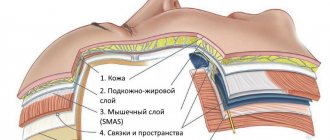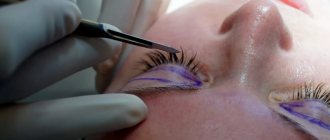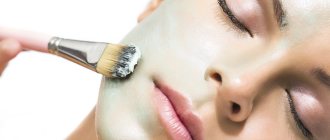A furuncle or boil is an inflammatory process accompanied by the formation of suppuration, which, occurring in the hair follicle, spreads to soft tissues and sebaceous glands. At the initial stage, it is possible to cure a boil with non-surgical methods, however, if the boil has developed before the appearance of the rod, surgical intervention is no longer possible.
At the Yuzhny clinic, mini-operations to remove a purulent focus and cleanse the resulting wound - removal of a boil - are carried out by highly qualified specialists. We guarantee comfortable sterile conditions in the outpatient operating room.
What does a boil look like?
Caused by white or golden staphylococcus, a boil or, as it is popularly called, a boil or abscess, is an abscess, the pustule of which is located in the center of the inflamed area, quite clearly visible to the naked eye. The inflamed area around the boil is usually bright red in color, and the temperature in this area of the skin is increased. At the initial stage, this is a noticeable thickening of the skin, which over time develops into a red tubercle with a rod in the center. In the area of the affected area, a pulsating pain is felt, which decreases as the abscess matures.
Common sites of manifestation
An abscess can appear on any area of the skin. Most often, the disease manifests itself in areas of the skin that have hair follicles, in which sweat often appears and friction occurs. Such places include:
- neck;
- face;
- small of the back;
- hips;
- back of hands;
- back of the head
Reasons for education
With the appearance of a boil, the reasons for its formation become the main question that interests patients.
The formation of an abscess is associated with the activity of bacteria. Most often, bacteria from the genus Staphylococcus aureus cause damage to the hair follicle. However, the development of purulent inflammation does not occur immediately after the entry of pyogenic microorganisms. For many people, bacteria live on the surface of the skin and mucous membranes without causing harm. As a rule, the initiation of the inflammation process depends on the following factors:
- insufficient hygiene;
- metabolic disease;
- severe chronic diseases such as sinusitis, tonsillitis, bronchitis;
- hypothermia;
- decreased protective function of the skin due to constant contact with aggressive chemicals and dust;
- poorly treated injuries and microtraumas of the skin;
- general weakening of the immune system;
- prolonged contact of the skin with organic nasal secretions during a runny nose;
- avitaminosis;
- wearing tight clothing that causes skin friction;
- excessive work of sweat and sebaceous glands;
- hereditary predisposition.
When to contact a surgeon
Boils can be treated at home only for those who are not at risk (do not suffer from chronic diseases), and boils are small in size (up to 5 mm). You should not self-medicate in the following cases:
- if the appearance of a formation is accompanied by intense pain and fever;
- if the abscess has not opened within 2 weeks;
- if furunculosis has developed;
- if the abscess occurs in a small child;
- if the boil is near the nose, lips, in the ear canal;
- there was a relapse of the disease.
Symptoms and stages
The location of the boil and the stage of its development determine the symptoms of the disease, so the symptoms of different ulcers may differ.
The universal symptoms are:
- malaise, weakness;
- increased body temperature;
- the presence of a yellow spot in the center of the tumor;
- white-bloody discharge from the center.
After the penetration of the pathogenic microorganism to the hair root and the start of the inflammatory process, the abscess goes through 3 stages of maturation:
- Infiltration – redness appears on the skin. It thickens and swelling of the skin area occurs. The infiltrate expands in diameter, giving the patient an unpleasant painful tingling sensation. This stage can last several days, and in some cases it can last for 1-2 weeks.
- Purulent-necrotic stage - usually four days after the onset of inflammation, a necrotic core begins to form in the center of the compaction. It is visible as a small white or yellow spot protruding above the skin.
- Healing - after removing the pus, the wound begins to close and heal, leaving behind a small pit-shaped scar.
After the rod has fully matured, the tissue bursts, which promotes the outpouring of pus and the release of dead tissue. The pus comes out gradually, the patient’s well-being improves, body temperature normalizes, swelling and hyperemia of the skin subsides.
Stages of development
At the very beginning of development, a boil can easily be confused with an ordinary pimple. However, within 3-4 days the inflammation grows, covering the surrounding tissues. Upon palpation, you can feel the tension and density of these tissues.
After a few more days, a sac with a purulent formation forms in the center of the boil, a necrotic core appears and the tissue softens.
Over time, the boil, unable to withstand a large amount of pus, opens and the pus, rejecting the necrotic core, flows out. After which the swelling gradually subsides and redness passes, and a small scar forms in the center of the former boil.
The most dangerous boils are those that arise near the lips, ears and nose. You should not try to squeeze out boils yourself, even if they have arisen in other locations. This can lead to the spread of infection, which will entail serious complications leading to the development of regional lymphadenitis, lymphangitis, and thrombophlebitis.
When is it necessary to open boils?
Non-surgical methods of treating the disease can be used exclusively at the initial stage of the disease, and they are not always effective. At the purulent-necrotic stage, if the abscess does not open independently and its contents do not release, surgical intervention is indicated.
Under no circumstances should such an event be held at home. This is especially true when it comes to opening a boil on the face. Incorrect technique for cleaning the wound from purulent contents and violation of antiseptic rules can lead to infection of surrounding tissues, which leads to complications. Opening a boil should only be carried out by a specialist who can comply with all the necessary rules.
The following indications exist for opening an abscess:
- the abscess is not opened independently for 10 days;
- the size of the abscess in diameter is 1 cm or more;
- a sharp increase in temperature, increased pain and swelling;
- reappearance of the boil;
- the appearance of several ulcers at once;
- the boil has arisen in the area of the lymph node;
- the patient suffers from diabetes;
- the abscess is located on the face above the upper lip.
Opening a boil of the nose and opening a boil of the ear are quite complex and must also be removed exclusively by specialists.
The manipulation must be carried out on time to avoid complications such as carbuncle or abscess.
Treatment of furunculosis
Furunculosis is a rather serious disease that should be treated with great caution and in no case should you self-medicate. You should not make compresses, use ichthyol and Vishnevsky ointment - in most cases this leads to the spread of the inflammatory process.
Treatment of a boil is only surgical, because no other therapy will lead to success if the focus of purulent inflammation is not promptly removed or opened and drained. The basic principle of purulent surgery “Ubi pus, ibi evacua” (where there is pus, excise and open there), known since the time of Hippocrates, has not lost its significance to this day, despite the use of highly effective antibacterial drugs, powerful detoxification, immune therapy, etc. .
Opening a boil is usually performed under local anesthesia and is painless for the patient. The point of treating a boil, like any purulent lesion, is to allow the purulent discharge to drain out, and then ensure constant drainage from the wound.
Simple (uncomplicated) boils can be treated on an outpatient basis and do not require hospitalization. But in the case of a severe course, if the patient develops swelling of the soft tissues of the cheek, lip or eye, emergency hospitalization in the surgical department is necessary to constantly monitor the development of the process and prevent complications.
At high temperatures, strict bed rest, liquid food are prescribed, and the patient is forbidden to talk or chew.
Opening boils in Moscow – prices
The following factors influence the ratio between boil opening and price:
- size and number of boils;
- stage of inflammation;
- the presence of individual characteristics of the manifestation of the disease.
To clarify the cost of surgical intervention, you must consult a surgeon. At the Yuzhny clinic you can get rid of an abscess in three stages:
- making an appointment;
- initial consultation with an experienced specialist;
- surgery.
| Service | price, rub. |
| Consultation with a surgeon, candidate of medical sciences | 1800,00 |
| Consultation with a surgeon, candidate of medical sciences (branch on Krasnaya Presnya) | 2600,00 |
| Consultation with a surgeon | 1600,00 |
| Repeated consultation | 1300,00 |
| Surgical treatment of boils | 5200,00 |
| Treatment of corns using radiosurgical method | 3700,00 |
| Lipoma removal | 8800,00 |
| Removal of atheroma | 7700,00 |
| Dressing | 500,00 |
How to prepare for removal?
As a rule, no additional preparation for a mini-surgery is required; a visual examination by a surgeon is sufficient.
The anesthesiologist selects an effective method of pain relief. When using local anesthesia, your doctor may prescribe:
- general blood analysis;
- blood sugar test;
- analysis for infections;
- coagulogram to clarify bleeding time and blood clotting rate.
In some cases, additional research methods may be required. For example, ultrasound of soft tissues for differential diagnosis.
How is the operation performed?
The procedure takes 15-20 minutes. After treating the surface of the skin with an antiseptic solution, the surgeon injects the anesthetic into the unaffected tissue around the abscess. 3 minutes after anesthesia, a hole is created in the wall of the abscess using a scalpel, then the rod is removed. The resulting wound is cleaned of purulent contents and treated with an antiseptic. If the affected area is large, sutures may be necessary. The final step is to apply an aseptic dressing to the wound.
After surgery, the doctor gives information about the required frequency of examinations, dressings and medications that can be used for recovery at home. In some cases, it is possible to prescribe antibiotics and immunomodulatory agents.
We speed up the process with medications
It will take at least a week before the abscess opens and completely clears itself. In order to shorten the time it takes for boils to ripen, after medical consultation, you can use the following medications:
- Vishnevsky ointment - make a compress (soak gauze cloth with the product), apply to the affected area, secure with a bandage. Change every 12 hours. The drug improves blood circulation, which promotes the rapid release of pus to the outside.
- Ichthyol ointment - cotton wool soaked in medicine is applied to the boil, covered with parchment on top and fixed. Replacement is done every 8 hours. An application made in this way will speed up the process of maturation of the pustule. At the same time, the product has a bactericidal and analgesic effect.
- Levomekol ointment is a combined drug with antibacterial and immunomodulatory effects. A cloth napkin is soaked in the medicine, applied to the boil and fixed.
If the boil does not mature, physiotherapy is performed, for example, ultraviolet radiation. You can warm up the affected area yourself - dry heat will speed up the process of formation of purulent-necrotic masses, and accordingly shorten the recovery time.
Recovery period
After the operation, the patient can be discharged within a few hours. If drainage was used during the procedure, it is removed by the surgeon after 1-2 days. The patient is prohibited from physical activity for 2-3 days after the manipulation.
An aseptic dressing is applied until the wound is completely healed. For a period of 2 weeks, the postoperative wound is monitored, and it is necessary to go for examination at a frequency established by the surgeon. You will need to change the dressing regularly, follow all the doctor’s instructions, and take a course of antibiotics if they were prescribed.
To prevent secondary infection, you should follow the rules of personal hygiene, ensure optimal rest and proper nutrition.
Surgical intervention
If a woman (man) realizes that the abscess will not open on its own, it is necessary to urgently consult a doctor - a deep subcutaneous abscess requires surgical intervention. Otherwise, the boil can break into the anatomical cavities, and this is fraught with complications including sepsis.
Surgical treatment is performed under anesthesia, most often local anesthesia is used. The boil is opened and drained, completely removing all purulent contents. Next, the wound is disinfected and stitches are applied if necessary. The patient should remain in the hospital under the supervision of a doctor for several days after the intervention.
In the postoperative period, the patient undergoes antibacterial therapy with local or systemic drugs. For better healing and to prevent further relapses, it is recommended to undergo a course of physical treatment.
Please understand that self-medication can be dangerous, so consult your doctor first before doing anything.
Why do you need to remove a boil at the Yuzhny clinic?
Contacting the Yuzhny clinic guarantees you the provision of high-quality medical care at an affordable price. Highly qualified surgeons select an individual approach to each patient, including high quality services and comprehensive treatment.
Specialists will conduct an initial examination, answer all your questions and help you prepare for surgery, and the availability of modern equipment in the clinic will allow patients, together with the doctor, to select suitable physical therapy methods for the fastest possible recovery after surgery.
